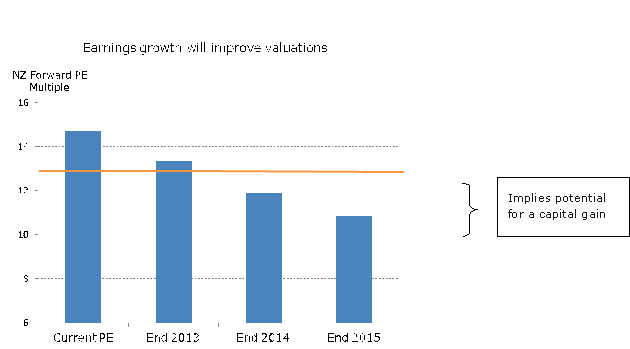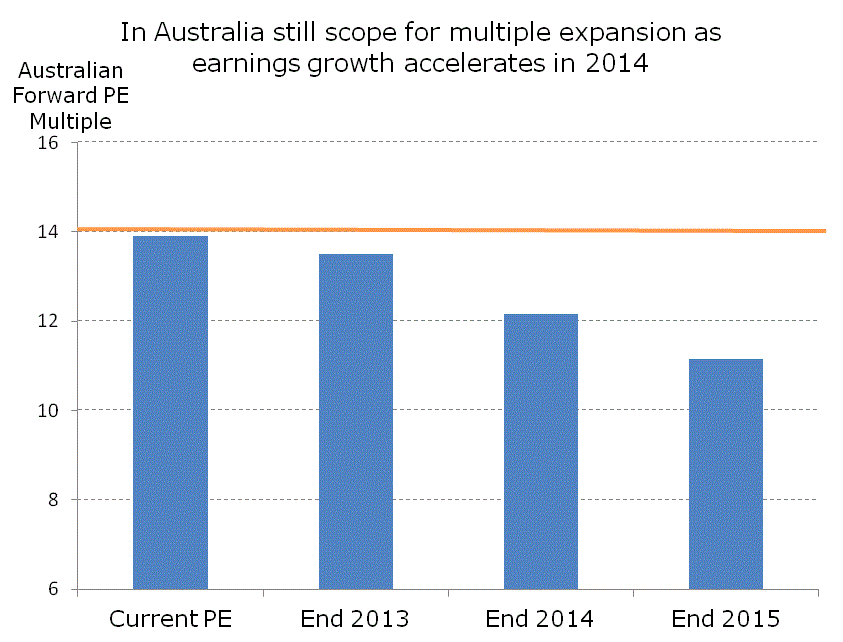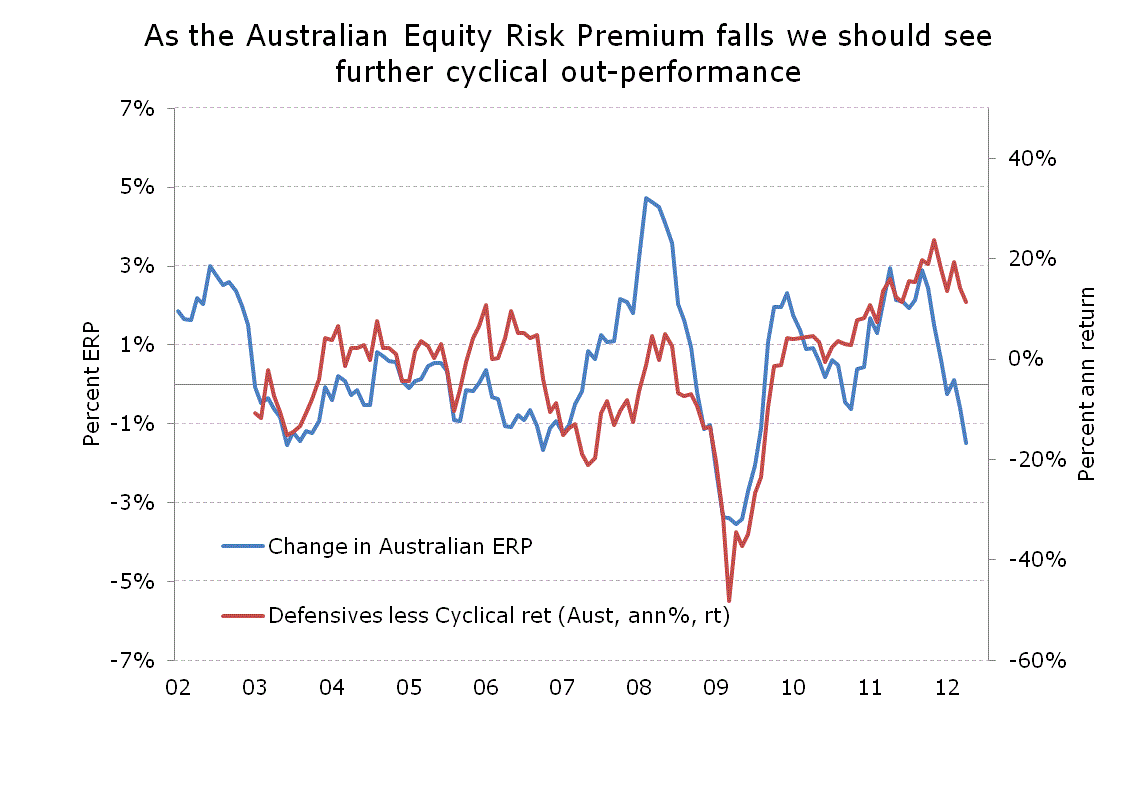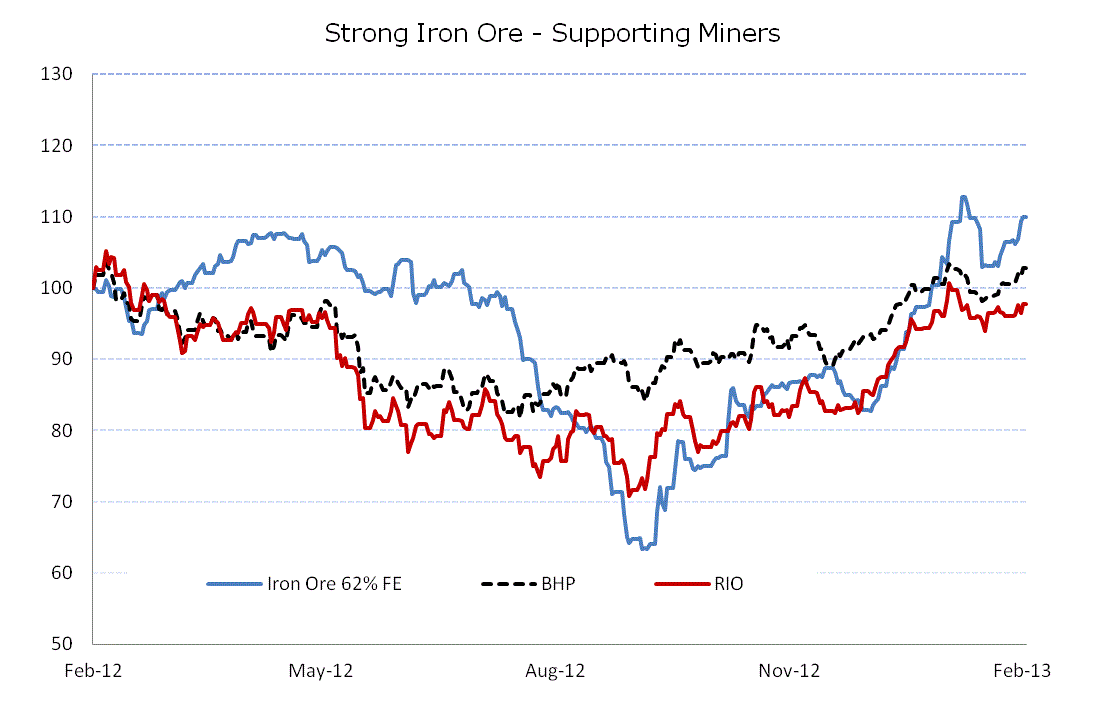Harbour Monthly Commentary: The price is right in equities
Despite talk of a bubble, Australasian equities are not expensive, particularly when compared to bonds.
Monday, February 11th 2013, 2:45PM
by Harbour Asset Management
Some investors think we are in an equity bubble . Other commentators say that equities are expensive. Our preference is to think that bonds are very expensive, driven by fear and extreme intervention by central banks. Although we recognise that the some of the tail risks experienced in 2008-2012 remain, they are fading. Perhaps the risk of inflation and the withdrawal of quantitative easing is the new risk to watch more closely.
While a pull back in risk assets wouldn’t be surprising after the strong rally, fundamentals for markets continue to improve, and relative to either bonds or cash, equities are still good value. Moreover, cyclical and growth stocks are set to benefit from a lift in economic growth rates, especially if growth remains in the Goldilocks territory
So the key question we get asked is: Are Australasian Equities expensive? Our view is no.
At 14.7 times earnings, the New Zealand equity market is above the long term average of 12.7 times earnings . Similarly the Australian market (ex-resources) is now trading on about 13.9 times, broadly in line with the long term average. On the face of it you could say the New Zealand market is expensive. But set against this assessment is the fact that earnings growth is accelerating, corporate balance sheets are in good health, dividends are growing and corporate activity is picking up. Moreover, interest rates are at particularly low levels and there is no sign of building consumer price inflation (yet!). Most importantly relative to bonds and cash, equities still look very cheap.
Until now the equity rally has been about a re-rating . An improving earnings revision ratio, and the prospect of rising earnings and dividends, suggests we are entering a different stage of the investment cycle. The move in equities from here is likely to be about earnings growth.
Of course increasingly commentators are going to say that equities are looking expensive, that challenges remain, and that the start of a sell-off in the bond market will create its own challenges.

Forsyth Barr estimates that earnings growth will be 10% in 2013, 12% in 2014 and a further 9% in 2015. Those compound growth rates equate to a lower than average price to earnings multiple by 2014.
And this improvement in corporate earnings is not limited to New Zealand. As an indication of the follow through from stronger global economic data, the corporate earnings revision ratio has lifted significantly. Globally the ratio of upgrades to earnings to downgrades has lifted from 0.63 to 0.83, and the improvements were seen across 13 out of 15 sectors . In the US, over 70% of companies reporting earnings are beating estimates, and the average surprise factor is 4.6%. This is strong data at a corporate level.
In Australia, UBS estimates that earnings growth may be as low as 3% in 2013, before accelerating to 11% in 2014 and about that again in 2014. While it is clear that the non-mining Australian economy is still stuck in first gear, there is plenty of evidence to suggest that the interest rate cuts are beginning to have an impact. For instance, Australian house prices rose quite sharply in the final quarter of 2012. The market will most likely continue to pre-empt the pick-up in earnings. The price movements in January of cyclical stocks in our portfolio like Seek, Lend Lease, some retailers and financials, Flight Centre and Ardent Leisure Group all suggest a change in investor sentiment.

Source : UBS
Those investors that have been holding onto cash and fixed interest weightings above their long term desired positions have watched the beginning of a strong equity rally. The Fear of Missing Out (FOMO) is a newish expression coined by accident in an on line gaming environment in 2006. This year it has jumped into financial market parlance as we observe larger than normal swings in allocations to equities (particularly in the US ). As we described in our December monthly, the reflation trade and the normalisation of Equity Risk Premiums continue as confidence in policy improves, as growth improves and bond yields rise. These shifts have important implications for portfolio and overall asset allocation.
We reiterate our findings:
- First, correlations between stocks are likely to fall. This provides much better opportunities for active management;
- Second, we ought to observe cyclical and growth stocks out-performing defensive stocks. Financial stocks should also continue to out-perform the market – although the performance of banks will depend on how much bonds sell off, and
- Finally, we continue to see an opportunity in Australian cyclicals as equity risk premiums fall – more so than in New Zealand where the catch up rally in cyclicals has been more advanced.

Adding Japan to the recovery list
For the 5th month in a row we can say that in general global housing, and general business indicators have improved in both the US and China. The change is that we can now add Japan to the list of major countries where business confidence is picking up. This pick up in business confidence is backed by the new 2% inflation target and the open-ended commitment to asset purchases (although these don’t start until 2014). From an equity perspective, Japanese commentators report positive equity fund inflows and December saw 15 new IPOs – 7 of those doubled in day 1. Japan remains the second most important trade counterpart for both Australia and New Zealand in Asia. A recovery in Japan will have important flow on impacts for trade in the region, and anecdotally we have seen Japanese equity portfolio managers continuing their search for yield in both the Australian and New Zealand equity markets.
The strength of iron ore surprises many commentators
Iron ore prices have remained elevated, sitting comfortably over $150/tonne when the consensus has a $135 target for the current quarter. At this rate there will be upgrades to profit forecasts for the iron ore companies . While many commentators had thought that this was just a re-stocking cycle, Chinese indicators continue at a pace consistent with 8% GDP growth. Surveys in January of steel traders show strong order books, improving profitability and rising utilisation, at the same time as Chinese iron ore stocks have fallen to a 52-week low .
Commodity prices have also out-performed since the sharp sell-off at the middle of 2012.
Looking forward, given our positive outlook for Chinese activity (and the more recent lift in global activity more generally), Harbour’s preferred resource exposures are the major miners. There are a number of factors contributing to our preference for both BHP and Rio Tinto, with both production volumes and commodity prices (particularly iron ore) seemingly ahead of analyst estimates. Additionally, both companies have a genuine chance of improving operational performance through cost-cutting and restructuring. Rio Tinto has announced specific initiatives to cut costs and both companies ought to benefit from selling underperforming assets. For the first time in over a year, analyst earnings estimates are moving from downgrades to upgrades, and any signs of delivery on costs, volumes and restructuring are all potential value-drivers for the majors going forward.

Source: Bloomberg
Outlook
While domestic valuations appear full, in our assessment they are not yet fully stretched and especially so relative to cash and bonds.
In particular, we expect that NZ equities will continue to be supported by a global cyclical upturn (China, Japan and the US) and low domestic interest rate settings. However, a further sell-off in bonds could impact local defensive stocks and we will be maintaining an under-weight in those sectors.
Australia has also started to show improving growth. A lift in China and Japan will help, and elevated iron ore prices are likely to flow into growth prospects. We think that returns in Australia are probably marginally better than in New Zealand and accordingly we have lifted our Australian exposures further.
While there is potential for a consolidation phase given the recent strength of the markets, these pauses are hard to predict and it is possible that the coming earnings round will be more positive than the market expects. Moreover, early results from companies in the US and early reporting companies like National Australia Bank suggest there is capacity for continued upside. So, for these reasons, we believe that Australasian Equities are not currently overpriced.
Best wishes for the Year of the Snake as we push on into 2013.
Important disclaimer information
| « Pathfinder Commentary: Portfolio protection | Hamish Douglass Unplugged - Latest Video from Adviser Briefing - August 2012 » |
Special Offers
Comments from our readers
No comments yet
Sign In to add your comment
| Printable version | Email to a friend |









